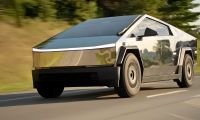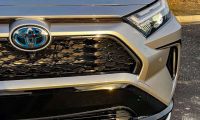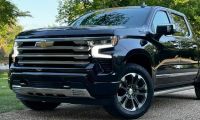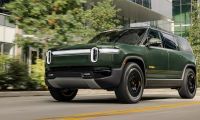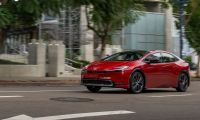The sight of a Mercedes G-Wagon often turns heads. Its iconic, boxy silhouette, a testament to rugged capability and timeless design, signals a particular kind of buyer. So, when Mercedes announced an all-electric version of this beloved behemoth, the excitement in certain circles was palpable. Yet, despite its legendary status, the electric G-Wagon, by many accounts, has failed to electrify the sales charts. This underperformance stems from a critical miscalculation: a fundamental misunderstanding of both the traditional G-Wagon buyer and a failure to effectively court a new, EV-centric demographic.
The G-Wagon Buyer: A Profile in Traditionalism
The typical buyer of a Mercedes G-Wagon is a distinct individual. They are, by and large, an older, affluent demographic, often with a deep appreciation for heritage, enduring design, and mechanical robustness. Crucially, they are not, generally speaking, early adopters of cutting-edge technology, particularly when it fundamentally alters the character of a vehicle they cherish. The G-Wagon's appeal has always been rooted in its unyielding, somewhat anachronistic charm – its roaring V8, its rugged ladder frame, and its no-nonsense, almost military-grade presence. To present this buyer with an electric powertrain, stripping away the very visceral elements they love (the engine sound, the fuel stops, the sense of raw, mechanical power), without a compelling, alternative narrative, was a significant misstep.
A Missed Marketing Opportunity: Unique Advantages Left Unsung
Every electric vehicle, especially a luxury one, needs to articulate its unique value proposition beyond simply "it's electric." For the electric G-Wagon, advantages like instant torque for unparalleled off-road capability, reduced maintenance, and the undeniable prestige of being an early adopter of an iconic EV should have been trumpeted from the rooftops. Mercedes, however, seemed to largely market the electric G-Wagon as simply a G-Wagon, but electric. There was a notable lack of emphasis on why this electric iteration was superior for its target activities or why it would appeal to those who prioritize electric power. This omission meant that the very people who typically buy G-Wagons, those traditionalists, weren't given a compelling reason to jump ship from their beloved V8s.
Failing to Cast a Wider Net: The Unreached EV Enthusiast
Compounding this issue was Mercedes' apparent failure to effectively reach out to potential new buyers – the affluent, technology-forward EV enthusiasts who might have been drawn to an electric G-Wagon if properly informed. This demographic, often younger and more engaged with sustainable technologies, might have overlooked the electric G-Wagon because Mercedes' marketing wasn't specifically targeting them. The perception remained that it was just another niche G-Wagon, rather than a groundbreaking electric luxury SUV. Tesla, for all its quirks, excels at cultivating a tech-forward image that resonates with this precise demographic. Mercedes, in this instance, seemed content to preach to the choir without inviting new voices.
A Strategic Misstep: Understanding Two Audiences
The underperformance of the electric G-Wagon ultimately boils down to a mixed bag of strategic misfires. Mercedes seemingly failed to fully grasp either its existing, deeply traditional G-Wagon buyer or the need to aggressively attract a new, more EV-focused clientele. It tried to slide an electric powertrain into an icon without sufficiently explaining why it was a good idea for the existing fan base, nor did it effectively broadcast its existence and unique advantages to those already looking for an electric luxury vehicle. This blend of misjudgment in understanding its core market and a lack of assertive outreach to a new one left the electric G-Wagon idling on the showroom floor rather than silently conquering the trails or boulevards it was designed for. The market for ultra-luxury EVs is growing, but it requires a tailored message.
Wrapping Up: A Lesson in Electric Iconography
The electric Mercedes G-Wagon's lukewarm sales performance serves as a valuable lesson in the complexities of the electric vehicle transition, especially for iconic models. Success requires more than simply electrifying a legendary nameplate. Automakers must understand the nuanced preferences of their traditional buyers while simultaneously crafting compelling narratives and targeted marketing strategies to attract new, EV-focused consumers. The electric G-Wagon, a silent icon, ultimately failed to roar in the marketplace because Mercedes misjudged its audience, failing to provide a clear and compelling reason for either old fans or new converts to embrace its electrifying potential.
Disclosure: Picture rendered with Gemini
Rob Enderle is a technology analyst at Torque News who covers automotive technology and battery developments. You can learn more about Rob on Wikipedia and follow his articles on Forbes, X, and LinkedIn.








